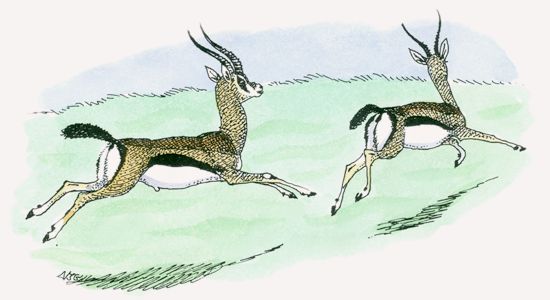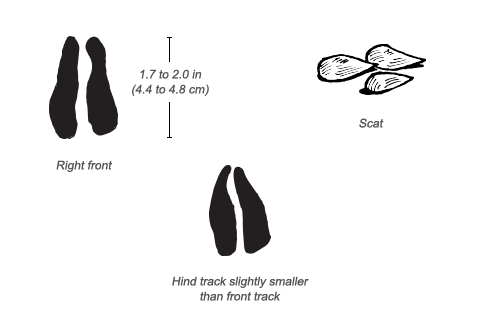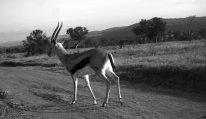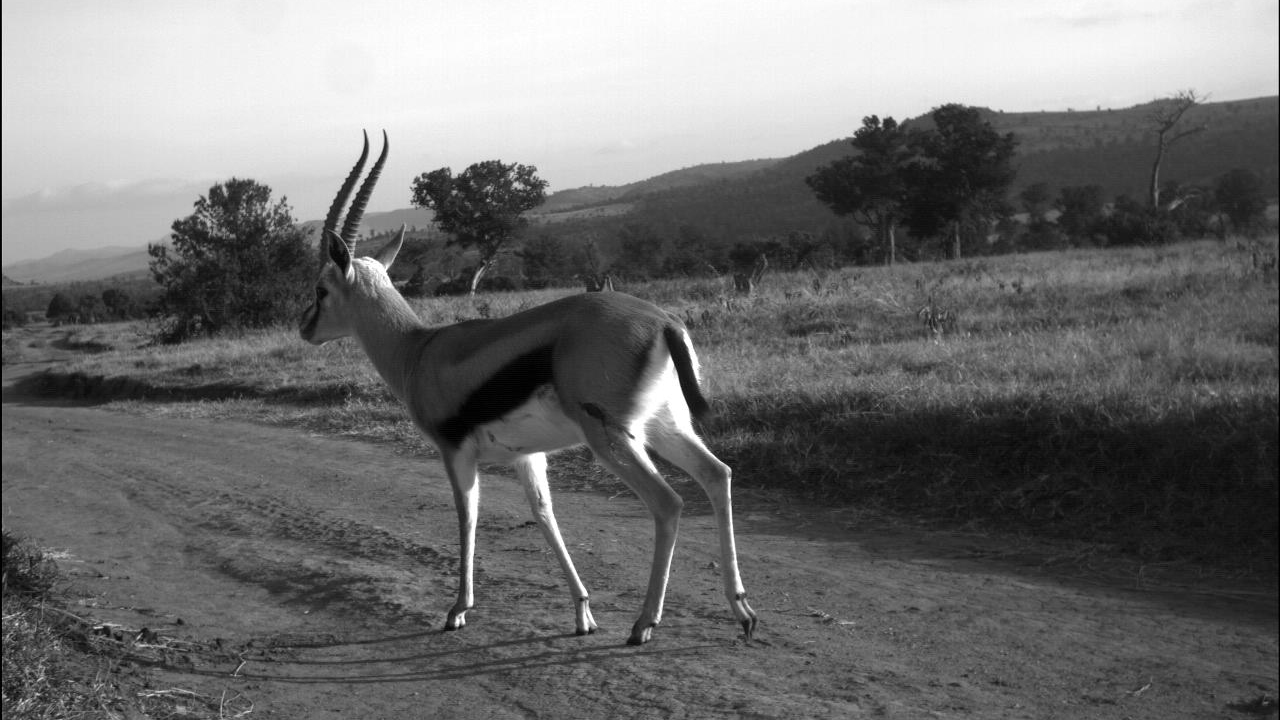Social Structure
Thomson’s gazelles form different types of herds: mixed herds, female groups, bachelor groups, and single territorial males. The number of individuals in any one group can range from 6 to 60 members, though larger groups of more than 1,000 are known to occur. Membership in any of these groups is fluid and constantly changing. Mixed herds happen most frequently during migration, though they also occur when a bachelor herd merges with a female herd. Female herds are typically mothers with offspring, and these groups settle on the best regions available among the single male territories. Male bachelor herds, on the other hand, are often forced to occupy substandard habitats. A single territorial male fiercely defends his region from any trespasser by displaying his horns to the intruder. This escalates into a battle if the other male presents his horns; otherwise, the intruder will leave the territory without a fight. When fights do occur, male Thomson’s gazelles lock and crash horns. All fights end with a grazing ritual, which begins with both parties eating while facing one another, then alongside each other, and then facing in opposite directions. Such fights are most common between neighboring territorial males needing to establish boundaries.
Communication
Thomson’s gazelles do not interact much with one another and even maintain their distance when grazing in the same herd.
Behavior
Thomson’s gazelles alternate between four behaviors: lying, standing, grazing, and moving. They usually graze in the early morning, at midday, in the evening, or around midnight. They spent the rest of their mornings sunbathing in an open area. Adult tommies spend about half of their time lying down, resting in bouts ranging from half an hour to five hours. While grazing, Thomson’s gazelles are extremely attentive to potential danger, constantly raising their heads to look about. When they spot a predator, individuals take up an alert stance or emit an alarm snort that induces others to flee. How soon they leave depends on how quickly a predator is approaching. When they are fleeing, these gazelles adopt a gait called “stotting,” where they leap with straight, stiff legs. They stott especially when running from hyenas and African wild dogs—two predators that outrun their prey rather than stalk it. This behavior may inform a predator that the gazelles can outrun it. Sometimes a herd will turn the tables and stalk the hunter instead of fleeing. This action, which tells the predator that it has been seen, forces the predator to move away and enables the group to keep a close eye on it. Herds have been known to follow a predator for over an hour, stalking it from a distance of 160 to 330 feet (50 to 100 m).
Conservation
Thomson’s gazelles are well protected in a number of national parks and other protected areas. However, poaching remains a major issue, and their population may still be declining.









